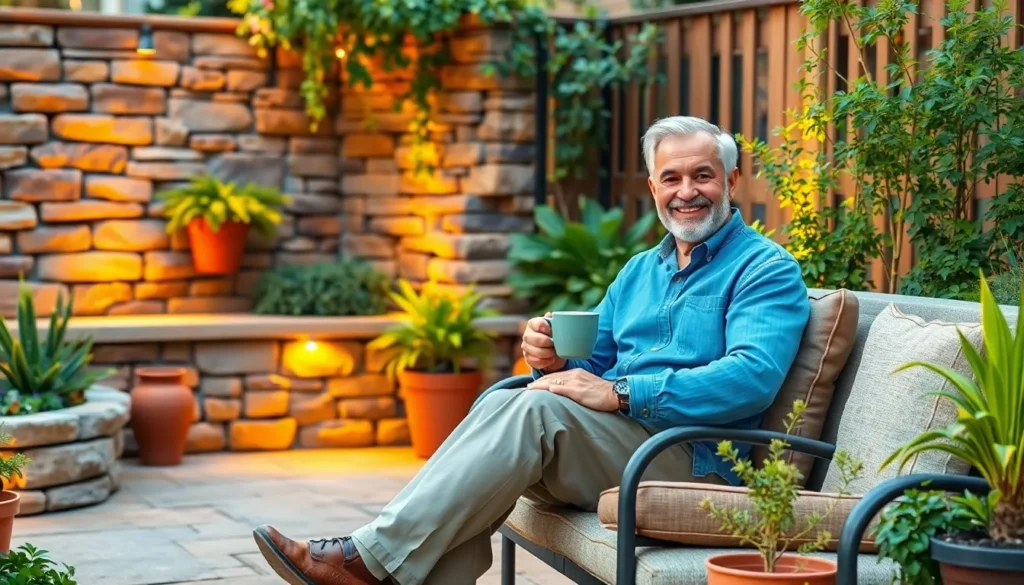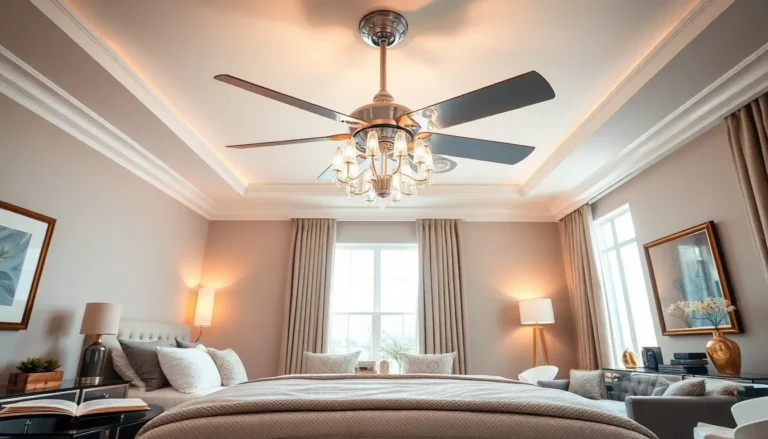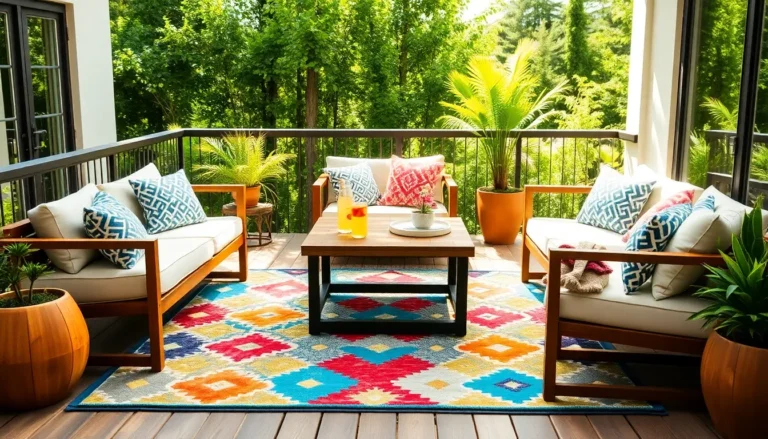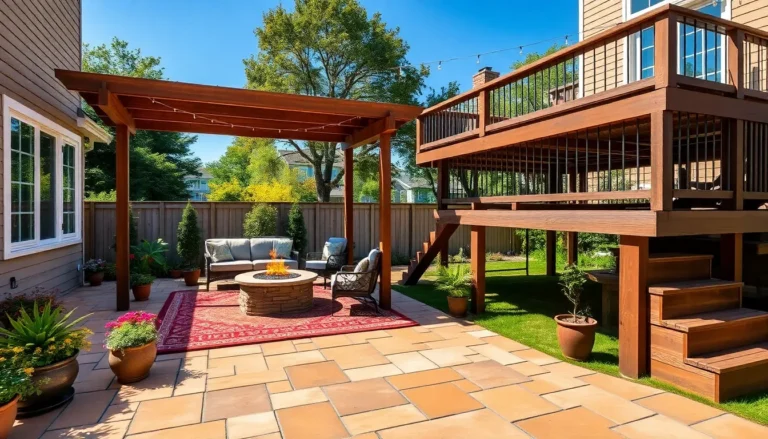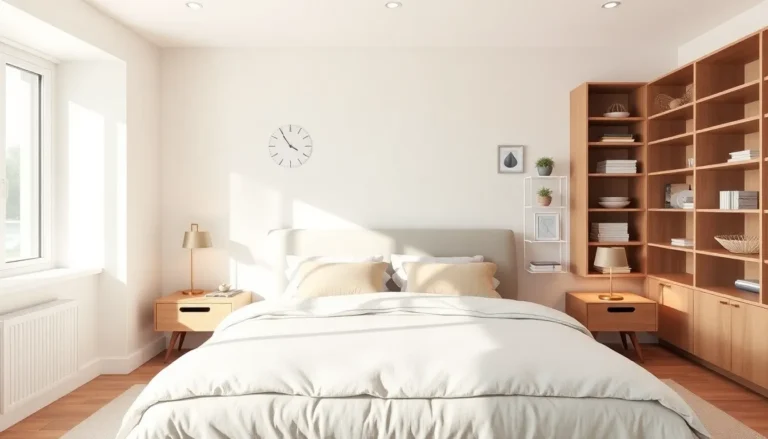Table of Contents
ToggleWhen it comes to outdoor living, patio walls often get overlooked, like that one friend who always shows up to the party but never gets invited to dance. Yet, these unsung heroes can transform any backyard into a cozy oasis. Imagine sipping your morning coffee while feeling like you’re in a luxurious retreat, all thanks to those sturdy, stylish walls.
Overview of Patio Walls
Patio walls serve as functional and aesthetic elements in outdoor living spaces. These structures create boundaries while adding a sense of enclosure. Materials commonly used for patio walls include stone, brick, and wood, each offering unique benefits and styles.
Designs vary from low garden walls to taller privacy walls. Low walls establish subtle demarcation and can double as seating. Taller walls enhance privacy and block wind, increasing comfort.
Incorporating features like built-in planters adds greenery and style to these walls. Lighting, such as built-in sconces, accentuates the ambiance during evening gatherings.
Maintenance of patio walls is crucial for longevity. Regular cleaning, inspection for damage, and timely repairs help maintain structural integrity.
Since patio walls enhance both the aesthetic and functional aspects of outdoor areas, they play a vital role. They influence the overall ambiance, making a space feel more inviting.
Including patio walls in outdoor designs contributes to a cohesive look. By choosing complementary materials and designs, these walls can tie various elements of a backyard together.
Ultimately, patio walls enhance the overall experience. They provide a versatile solution for different outdoor needs, marrying beauty with practicality.
Types of Patio Walls
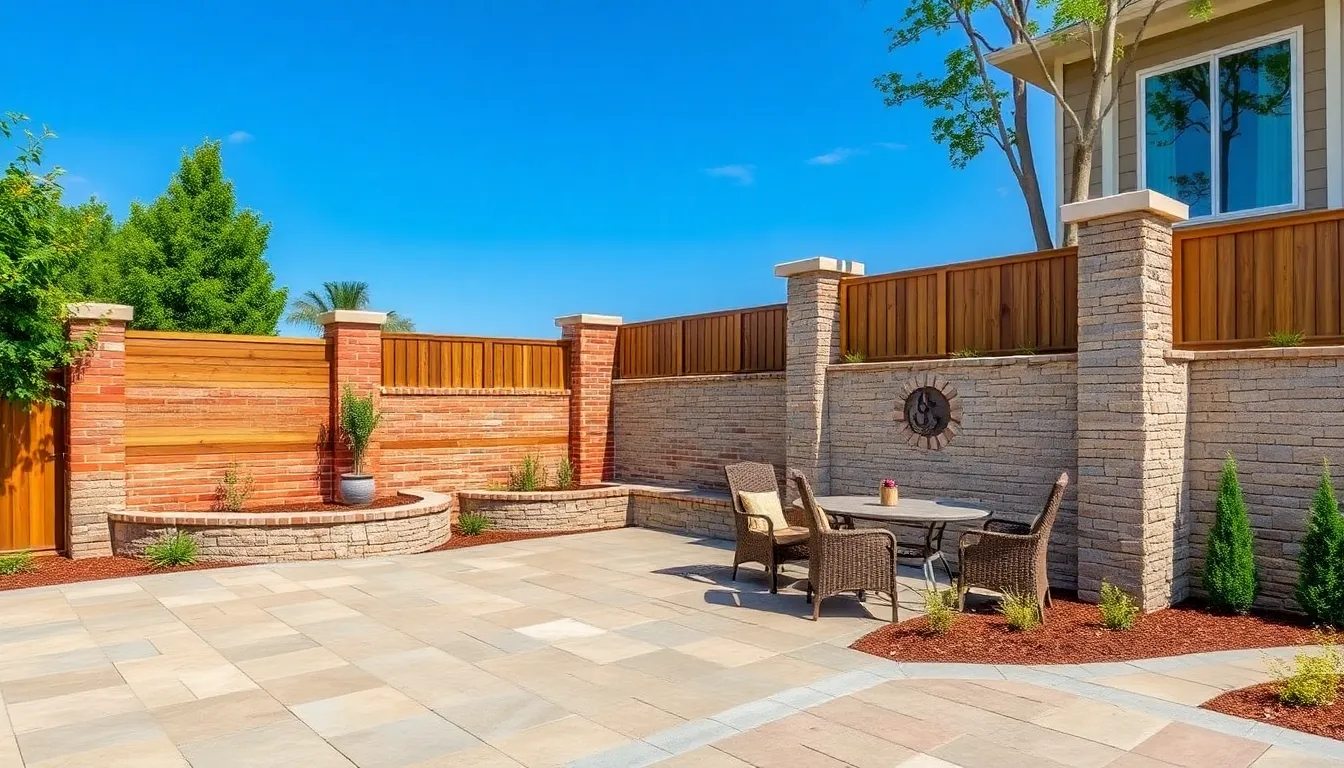
Patio walls come in various materials, each offering distinct advantages and styles. Here are some common types:
Brick Walls
Brick walls add a classic, timeless look to any patio. Durability stands out as one of their main features, allowing them to withstand various weather conditions. Maintenance involves simple cleaning, as bricks resist fading and damage. Additionally, they often provide good insulation, keeping outdoor areas comfortable in both hot and cold weather. Homeowners frequently appreciate the variety of bricks available, allowing for unique designs and colors.
Stone Walls
Stone walls bring natural beauty and elegance to outdoor spaces. Each stone’s unique texture and color enhance visual appeal, creating stunning focal points. These walls excel in durability, often lasting for decades with minimal maintenance. Installing stone walls can be labor-intensive, but their strength and aesthetic value justify the effort. Landscaping options, like planting shrubs or flowers nearby, can complement the rustic look of stone walls.
Wooden Walls
Wooden walls offer a warm, inviting feel, making outdoor areas cozy and appealing. Versatility defines wood, allowing for various styles such as vertical or horizontal slatting. Homeowners often enjoy the natural look, which blends seamlessly with outdoor environments. Regular staining or sealing preserves the wood’s condition, preventing rot and decay over time. Incorporating wooden walls can create privacy while allowing for creativity in design, from rustic to modern aesthetics.
Concrete Walls
Concrete walls provide a modern, sleek option for patio enclosures. Strength is a significant benefit, allowing these walls to withstand heavy winds and impact. Customization options abound, with various finishes, colors, and textures available. Concrete walls require minimal upkeep, needing only occasional cleaning to maintain their appearance. These walls frequently serve as blank canvases for creativity, enabling homeowners to add decorative elements or mural designs.
Benefits of Patio Walls
Patio walls offer several advantages that enhance outdoor living spaces. One significant benefit is the creation of privacy. By erecting walls, individuals can enjoy their patios without the prying eyes of neighbors, fostering a sense of seclusion.
Another advantage lies in wind protection. Patio walls can block strong gusts, making outdoor environments more comfortable during breezy days. They effectively shield seating areas, allowing for enjoyable gatherings without interference from the elements.
In addition to comfort, patio walls contribute to aesthetic appeal. Whether constructed from stone, brick, or wood, they serve as eye-catching features that elevate the overall design. A well-designed wall complements existing landscaping and adds texture.
Incorporating built-in seating or planters into patio walls enhances their functionality. This dual-purpose design makes efficient use of space while also providing additional seating for guests or a place to display flowers. Furthermore, inviting lighting fixtures can create a warm ambiance during evenings.
Patio walls also increase property value. A beautifully designed outdoor space can attract potential buyers by showcasing a well-thought-out landscape. Homeowners benefit from improved curb appeal as well, making their property stand out.
Lastly, maintenance demands for patio walls are manageable. Regular cleaning and occasional inspections can maintain structural integrity, ensuring longevity. These walls offer a stylish and functional solution for anyone looking to improve their outdoor space.
Design Considerations for Patio Walls
Designing patio walls involves several factors, including size, material, and aesthetic elements. Attention to these aspects ensures that the walls serve both functional and visual purposes.
Size and Height
Size plays a vital role in how patio walls interact with the overall outdoor space. Low walls, typically around two feet tall, create subtle boundaries while providing extra seating options. Taller walls, ranging from four to six feet, enhance privacy and wind protection, making outdoor gatherings feel cozier. It’s crucial to assess the space available and how much enclosure is needed. A well-placed wall complements the patio without overwhelming it. Consideration of local building regulations also ensures compliance and safety.
Material Selection
Material selection influences both the durability and aesthetic appeal of patio walls. Stone offers a timeless charm, suitable for rustic or elegant designs. Brick provides durability and a classic look, easily blending with various outdoor settings. Wood introduces warmth and invites a natural feel, while concrete allows for modern designs and customization. Each material comes with unique maintenance requirements, affecting long-term usability and appearance. Selecting the right materials based on climate and style preference enhances both function and beauty of the outdoor space.
Aesthetic Elements
Integrating aesthetic elements significantly elevates patio wall design. Built-in planters add greenery and life, attracting attention while softening hard edges. Lighting fixtures strategically placed along the wall create an inviting ambiance during evening celebrations. Choose colors and textures that align with the overall outdoor theme. Incorporating different finishes can add depth and interest, making the walls focal points. Artistic features, such as murals or mosaic tiles, further enhance visual appeal, reflecting personal style and creativity.
Maintenance Tips for Patio Walls
Regular maintenance ensures the longevity of patio walls. Begin by cleaning walls at least twice a year to remove dirt and grime. Use a pressure washer or mild detergent to wash stone and brick surfaces, while wooden walls benefit from gentle scrubbing with soap and water.
Inspect walls frequently for any signs of damage. Look for cracks in the mortar or chips in the material that could lead to structural issues. Early detection of potential problems prevents extensive repairs later.
For wooden patio walls, applying a sealant every few years protects against moisture and decay. Choose a sealant appropriate for the wood type, enhancing durability.
Consider repointing brick walls when mortar shows signs of wear. This process involves removing deteriorating mortar and replacing it with fresh material, maintaining the wall’s integrity.
Address weeds and vegetation growth promptly. Roots can destabilize walls and create further damage. Regularly trim plants back and use proper landscaping techniques to maintain healthy boundaries.
Protect against harsh weather by ensuring drainage systems direct water away from walls. Proper drainage prevents erosion and minimizes moisture buildup, which can weaken the foundation.
Finally, enhance the aesthetics of patio walls with regular touch-ups of paint or stain, depending on the material. Keeping them well-painted or sealed adds charm while also providing an extra layer of protection.
By following these maintenance tips, homeowners can preserve the beauty and functionality of their patio walls. Proper care contributes to a welcoming outdoor space that stands the test of time.

